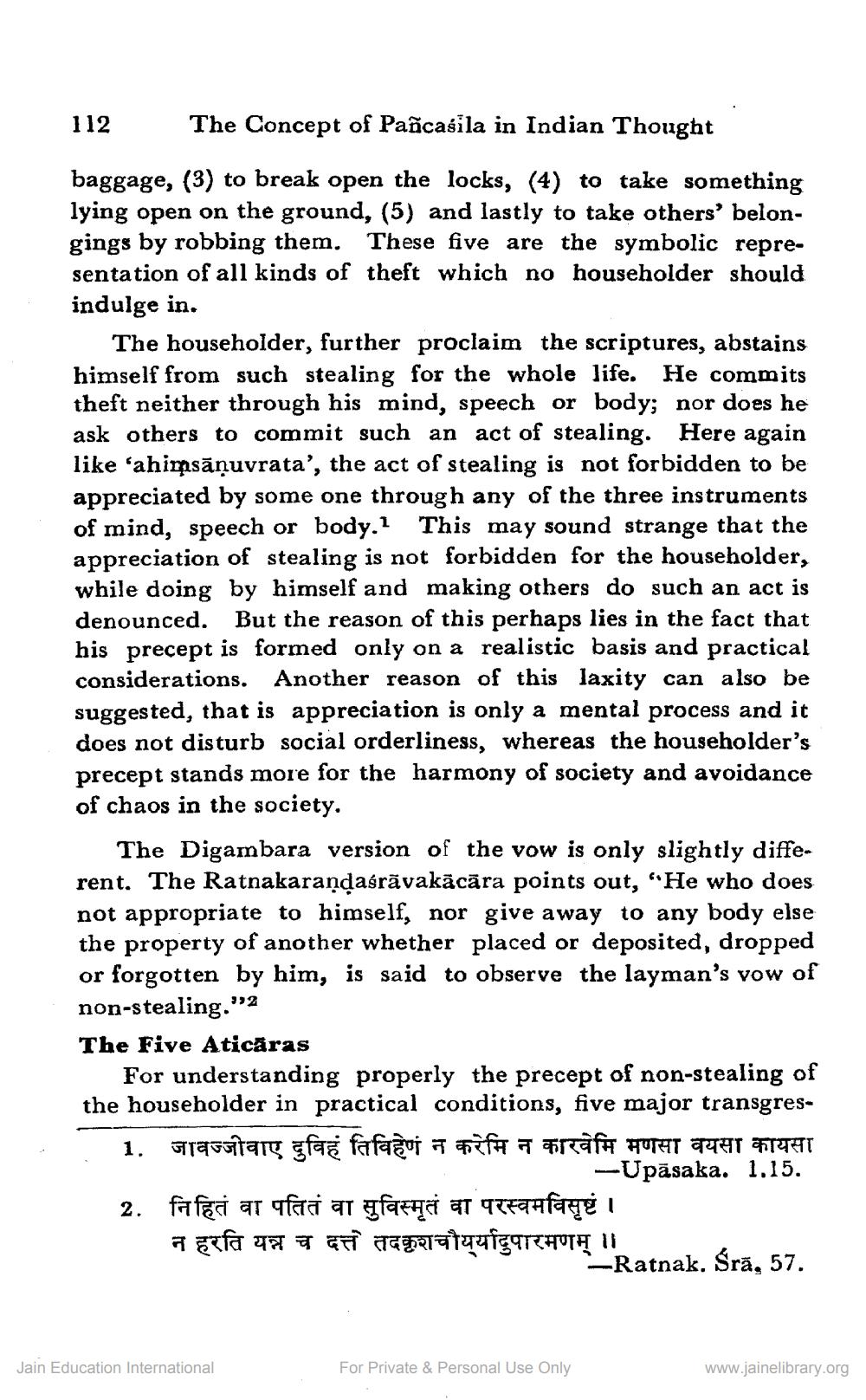________________
112
The Concept of Pañcasila in Indian Thought
baggage, (3) to break open the locks, (4) to take something lying open on the ground, (5) and lastly to take others' belongings by robbing them. These five are the symbolic representation of all kinds of theft which no householder should indulge in.
The householder, further proclaim the scriptures, abstains himself from such stealing for the whole life. He commits theft neither through his mind, speech or body; nor does he ask others to commit such an act of stealing. Here again like 'ahimsāņuvrata', the act of stealing is not forbidden to be appreciated by some one through any of the three instruments of mind, speech or body. This may sound strange that the appreciation of stealing is not forbidden for the householder, while doing by himself and making others do such an act is denounced. But the reason of this perhaps lies in the fact that his precept is formed only on a realistic basis and practical considerations. Another reason of this laxity can also be suggested, that is appreciation is only a mental process and it does not disturb social orderliness, whereas the householder's precept stands more for the harmony of society and avoidance of chaos in the society,
The Digambara version of the vow is only slightly different. The Ratnakarandasrāvakācāra points out, “He who does not appropriate to himself, nor give away to any body else the property of another whether placed or deposited, dropped or forgotten by him, is said to observe the layman's vow of non-stealing." The Five Aticāras
For understanding properly the precept of non-stealing of the householder in practical conditions, five major transgres1. जावज्जीवाए दुविहं तिविहेणं न करेमि न कारवेमि मणसा वयसा कायसा
-Upāsaka. 1.15. 2. farfeci ar qfarai ar ufarqa ay qafqhfaqe i न हरति यन्न च दत्तं तदकृशचौर्यादुपारमणम् ॥
-Ratnak. Śrā, 57.
Jain Education International
For Private & Personal Use Only
www.jainelibrary.org




